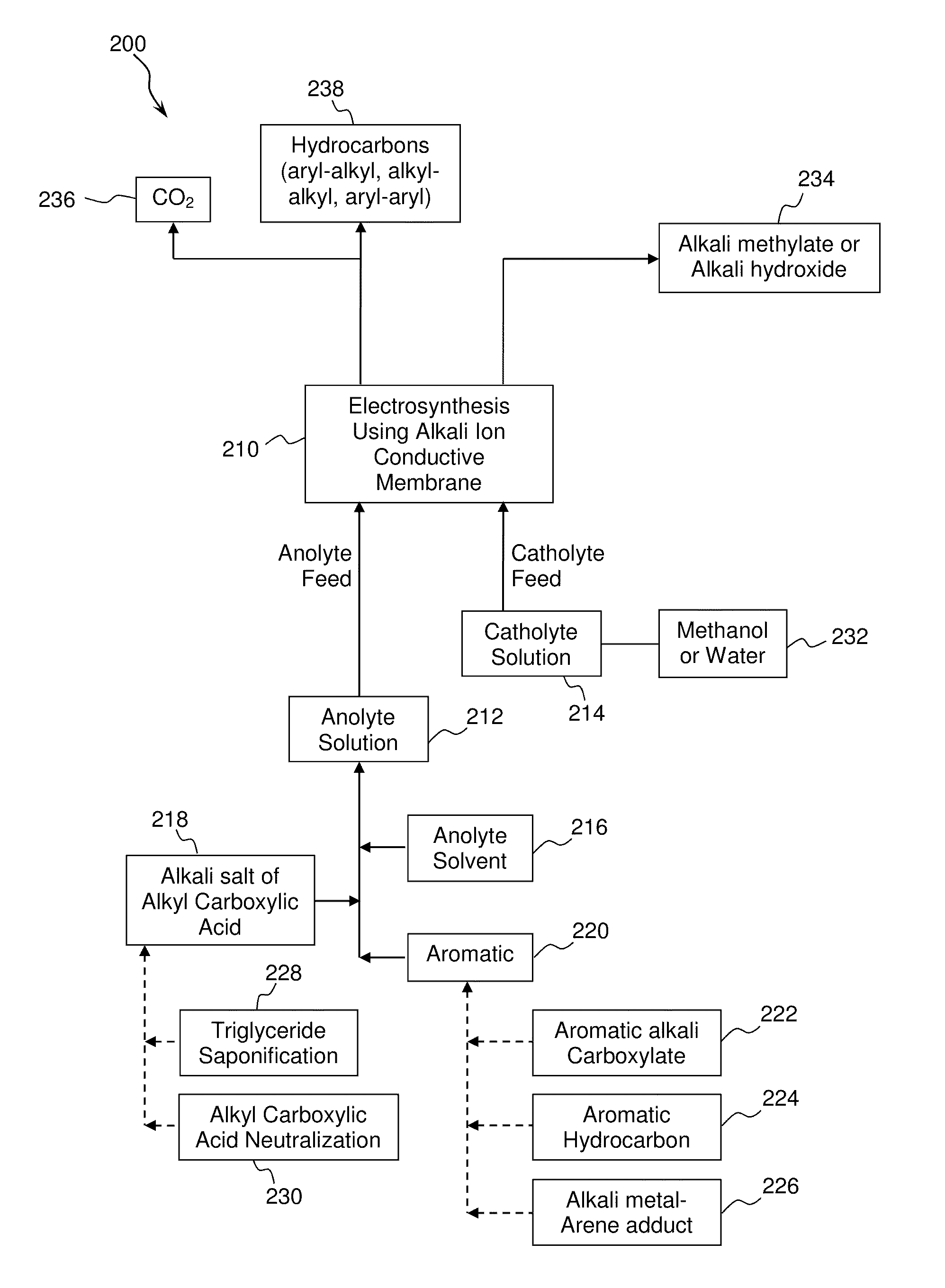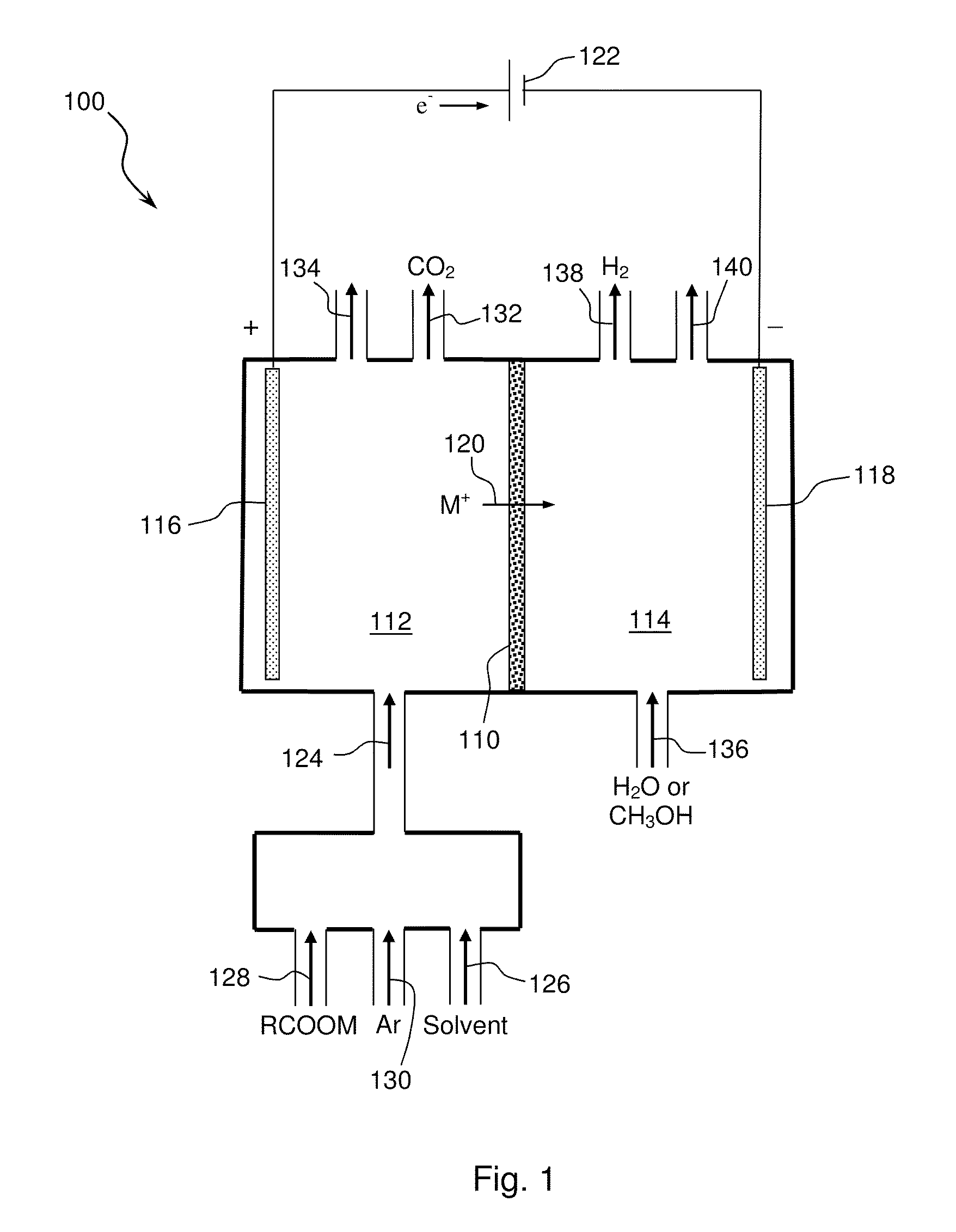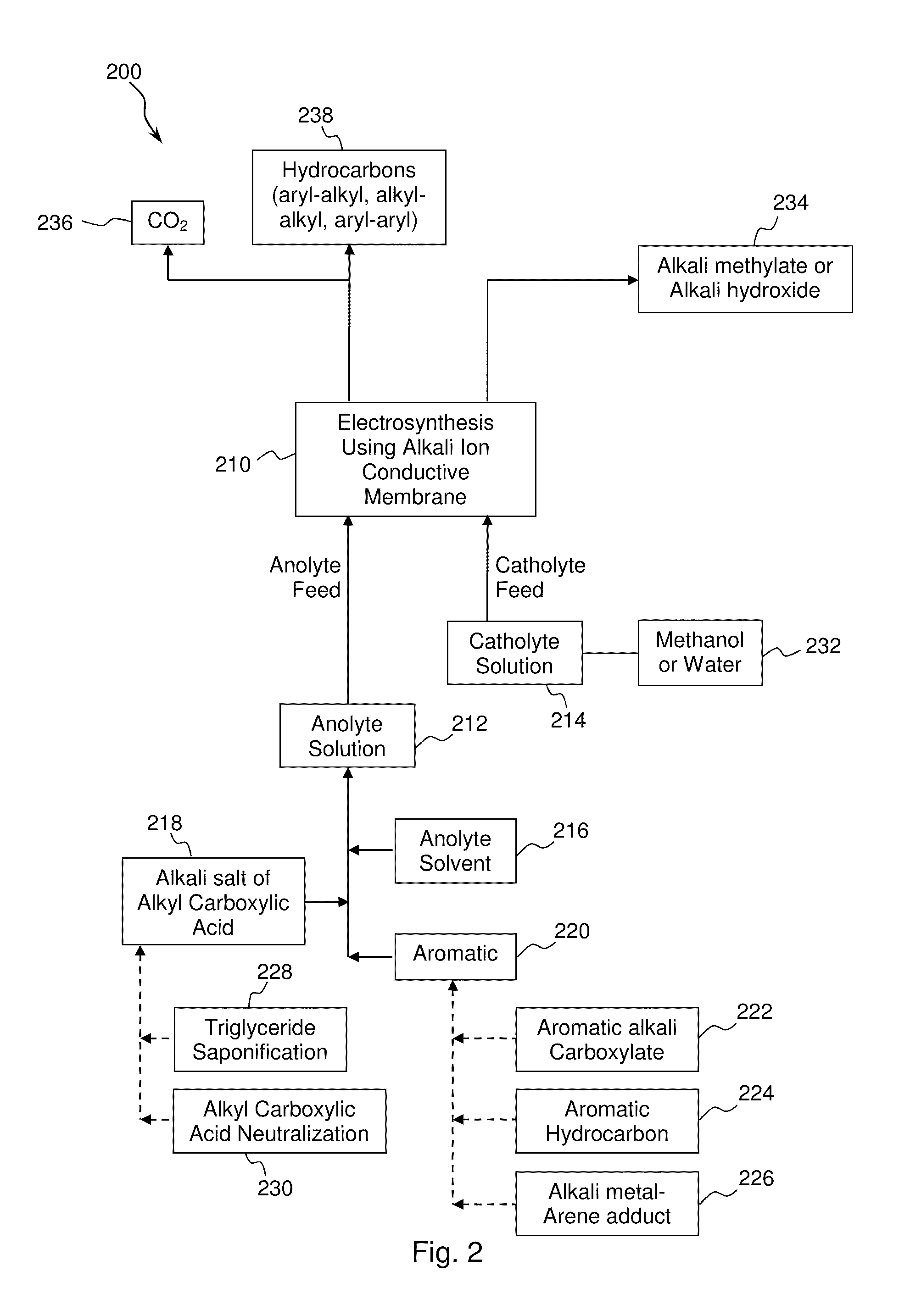Electrochemical synthesis of aryl-alkyl surfacant precursor
a technology of aryl-alkyl surfacant and precursor, which is applied in the field of electrochemical synthesis of aryl-alkyl surfacant precursor, can solve the problems of undesirable methyl side chain of products and high cost of traditional process manufacturing, and achieve the effect of reducing the cost of manufacture and cost reduction
- Summary
- Abstract
- Description
- Claims
- Application Information
AI Technical Summary
Benefits of technology
Problems solved by technology
Method used
Image
Examples
example 1
[0087]A mixture comprising an aryl carboxylic acid salt and an alkyl carboxylic acid salt was converted to an aryl-alkyl hydrocarbon by electrolytic (anodic) decarboxylation of both the aryl carboxylate and the alkyl carboxylate and subsequent aryl-alkyl carbon-carbon coupling. An equimolar mixture of sodium benzoate and sodium acetate was dissolved in a solvent comprising 20% water and 80% methanol to form an anolyte solution.
[0088]Approximately 300 mL of the anolyte solution was introduced into a two-compartment micro electrolysis reactor with minimal membrane-anode gap. The anolyte solution flow rate ranged from 60-100 ml / min. The electrolysis reactor contained a 1 mm thick NaSelect® NaSICON membrane having a 1 inch diameter. A smooth platinum anode and a nickel cathode were used in the electrolysis reactor. A 15 wt. % NaOH catholyte solution was used in the catholyte compartment. The electrolysis reactor was operated at a current density of 200-300 mA per cm2 of membrane area. T...
example 2
[0099]A mixture comprising an alkyl carboxylic acid salt and an arene hydrocarbon (benzene in this example) was converted to an aryl-alkyl hydrocarbon by electrolytic (anodic) decarboxylation of the alkyl carboxylate and subsequent aryl-alkyl carbon-carbon coupling. An equimolar mixture of benzene and sodium acetate was dissolved in methanol to form an anolyte solution.
[0100]The anolyte solution was introduced into a two-compartment micro electrolysis reactor and operated as described in Example 1. The electrolytic decarboxylation reaction is shown below:
CH3COONa→CH3•+CO2+e−+Na+
[0101]The evolved carbon dioxide was detected using an IR sensor and by lime-water analysis. FIG. 4 contains a graph showing voltage and current density verses time for this example. The alkyl radicals reacted with the aryl radicals under conditions that permit aryl-alkyl carbon-carbon coupling, thereby forming the aryl-alkyl product and other reaction products based upon the following non-limiting reactions....
example 3
[0107]A mixture comprising an alkyl carboxylic acid salt and an arene hydrocarbon (ethyl benzene in this example) was converted to an aryl-alkyl hydrocarbon by electrolytic (anodic) decarboxylation of the alkyl carboxylate and subsequent aryl-alkyl carbon-carbon coupling. An equimolar mixture of ethyl benzene and sodium propionate was dissolved in methanol to form an anolyte solution.
[0108]The anolyte solution was introduced into a two-compartment micro electrolysis reactor and operated as described in Example 1. The electrolytic decarboxylation reaction is shown below:
CH3CH2COONa→C2H5•+CO2+e−+Na+
[0109]The evolved carbon dioxide was detected using an IR sensor and by lime-water analysis. FIG. 5 contains a graph showing voltage and current density verses time for this example. The alkyl radicals reacted with the aryl radicals under conditions that permit aryl-alkyl carbon-carbon coupling, thereby forming the aryl-alkyl product and other reaction products based upon the following non-...
PUM
| Property | Measurement | Unit |
|---|---|---|
| thick | aaaaa | aaaaa |
| thick | aaaaa | aaaaa |
| thick | aaaaa | aaaaa |
Abstract
Description
Claims
Application Information
 Login to View More
Login to View More - R&D
- Intellectual Property
- Life Sciences
- Materials
- Tech Scout
- Unparalleled Data Quality
- Higher Quality Content
- 60% Fewer Hallucinations
Browse by: Latest US Patents, China's latest patents, Technical Efficacy Thesaurus, Application Domain, Technology Topic, Popular Technical Reports.
© 2025 PatSnap. All rights reserved.Legal|Privacy policy|Modern Slavery Act Transparency Statement|Sitemap|About US| Contact US: help@patsnap.com



